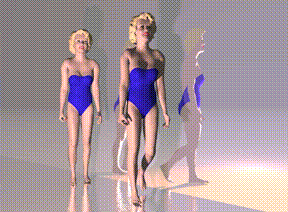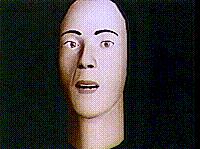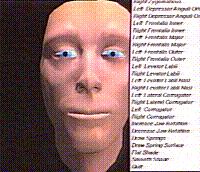Introduction
Computer Animation is one of the exciting of the multitude of applications spawned by the advent of computers. Animation can make a series of dead images come alive.
It is possible to categorize animation into various types
 Stick figure animation
Stick figure animation
 Cartoons
Cartoons
 Human like figure Animation
Human like figure Animation
Among all of the above, animating the human face is the most difficult task as each human face is unique and generating a life like representation of the face is really difficult.
The Human Face is a complex object which can be easily represented in two dimensions on a computer. However, to obtain a three dimensional representation of the same is an intricate task.
There are three steps in the animation of the human face
 Developing the model for the face
Developing the model for the face
 Modifying the facial expression
Modifying the facial expression
 Generating the images
Generating the images
There are three approaches to facial animation
 Key Frame animation
Key Frame animation
This requires complete specification of the model for each facial expression.
The key frame for these expressions are different for individual frames.

An example of Key Frame Animation
 Parameterisation
Parameterisation
In this model proposed by Parke and then by Waters, sets of parameters define the conformation in the expression of the face. However, the transformation specified by these parameters being rather global, it is difficult to model complex expressions.

Parke's model
 Muscle based modeling
Muscle based modeling
In this method, suggested by Platt and Badler, muscles are geometric deformation operators. Many muscle units and their parameter values must be specified to simulate natural expression.

Water's model
We shall first consider the Facial Action Coding System which was developed by Paul Ekman. We shall then discuss the Muscle based modeling developed by Platt and Badler and the Parametrised model by Waters in more detail.
 Back to home..
Back to home..










